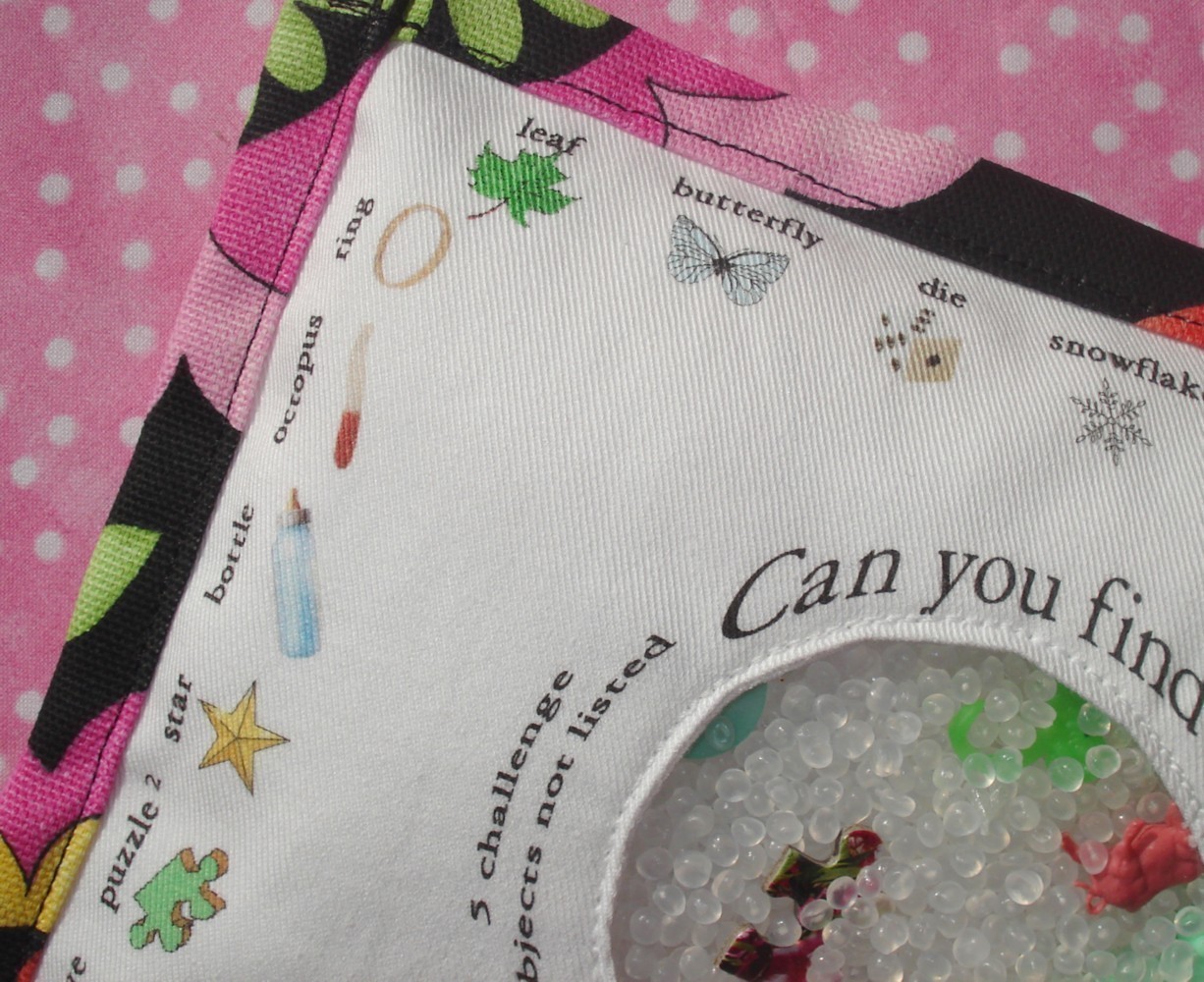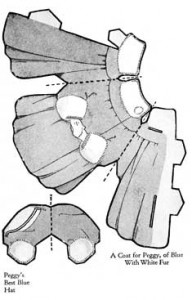
The Upscale Baby Blog (“Reviews of Stylish Baby Gear and Inexpensive Alternatives by Real Moms”) has been running a terrific series by Susan Maphis on the law, with many posts examining the law’s real-world impact on small makers of such products as cold-weather baby capes, eco-friendly animal dolls, personalized ceramic wall plaques, made-to-order coordinated mother-daughter outfits, custom quilts, organic-fiber baby sweaters, and toy barns from reclaimed wood. It makes for sad (some of the makers have already resigned themselves to going out of business) but important reading.
Archive for January, 2009
CPSIA Blog Day #2: Etsy’s Gallery of Unaffordability
 We posted a week and a half ago about the cute baby quilt priced at $3,530 — formerly $58, but with a new higher price to cover the required testing under CPSIA. (In general, items with many colors and components are hardest hit by the law’s onerous testing requirements.) At Etsy, the online crafts market, you can check out a whole gallery with dozens of “CPSIA specials” reflecting the new cost structure that Reps. Henry Waxman, Bobby Rush and their colleagues have succeeded in inflicting on the handcrafted market as of Feb. 10. (If the link doesn’t work, search “CPSIA” and sort by highest-price-first).
We posted a week and a half ago about the cute baby quilt priced at $3,530 — formerly $58, but with a new higher price to cover the required testing under CPSIA. (In general, items with many colors and components are hardest hit by the law’s onerous testing requirements.) At Etsy, the online crafts market, you can check out a whole gallery with dozens of “CPSIA specials” reflecting the new cost structure that Reps. Henry Waxman, Bobby Rush and their colleagues have succeeded in inflicting on the handcrafted market as of Feb. 10. (If the link doesn’t work, search “CPSIA” and sort by highest-price-first).
The $17,240 travel toy shown above, which has more than 40 different components, is at present among the most costly. (Its pre-CPSIA price: $20). Here is a $3,940 pair of toddler socks:

And if you’re on a limited budget, here’s a $900 “Elsa the Elephant” stuffed toy:

(Note to any consumer-advocacy lawyers in the readership whose first impulse is to cross-examine the crafters who posted these items: yes, it’s true, the cost of the testing can be spread over the entire lot of goods produced in the particular style and size. So the mom who makes the polka-dot socks at her kitchen table and sells them on Etsy doesn’t really have to recoup her $3,940 expected testing bill by selling one $3,940 pair of socks. She could instead break even by selling 10 pairs at $394 each, or even 197 pairs at $20 each. You sure tripped her up on that!)
CPSIA Blog Day #1: Past CPSIA bloggers

Among the bloggers who’ve done excellent posts on the Consumer Product Safety Improvement Act, but who don’t primarily blog on this or nearby topics, are BeliefNet’s Rod Dreher (who was onto the thrift store angle very early), John Schwenkler of Upturned Earth, Mark Thompson @ Publius Endures, economist Tyler Cowen at Marginal Revolution, Advice Goddess columnist Amy Alkon, Iain Murray at CEI “Open Market”, Jeff Nolan at Venture Chronicles, Patrick @ Popehat, Eve Tushnet (scroll a lot to Jan. 15), and leading education blogger Joanne Jacobs.
Do all of them know that today is CPSIA Blog Day, in which hundreds of bloggers will be calling attention to the law’s terrible effects? I hope so, because it would be great to hear their voices again as part of today’s chorus.
P.S. Great response! Posts from Amy Alkon at Advice Goddess, Patrick at Popehat, John Schwenkler, Mark Thompson at the wonderfully named League of Ordinary Gentlemen, and Eve Tushnet at Ladyblog.
Kozinski grudge-match litigant, cont’d
Readers may remember Cyrus Sanai as the litigant with the big grudge against Ninth Circuit Chief Judge Alex Kozinski who proceeded to launch a campaign trying to destroy Kozinski’s career (with some help from the Los Angeles Times). Now a California appeals court has issued the latest ruling in Sanai’s decade-long dispute with the owner of a Newport Beach apartment he once rented. Shaun Martin at California Appellate Report has details on the ruling, which sends the fight back to the lower courts. Martin calls it “a tale of litigation run amok. A tale that explains, in part, why some people hate lawyers; and, in particular, engaging in transactions with them.”
P.S. Sanai, in our comments section, says we’re wrong: for one thing, we described him as having sued the owner of the apartment he once rented when in fact “the complaint at issue is against UDR’s successor in interest, First Advantage Corporation, and UDR’s owner, Harvey Saltz”.
Cheerleading is a contact sport
And thus, per the Wisconsin Supreme Court, covered by state-legislated injury-suit immunity barring a suit filed against a teammate and school district [Frisch, Legal Profession Blog, AP; ruling]
No, they’re not “gambling devices”
An appeals court rules against Kentucky’s seizure of 141 offshore-casino domain names [Randazza, Citizen Media Law; earlier here, here, and here] More (via comments): Bill Poser, Language Log.
Sues siblings because Mom cut him out of will
Phoenix: “Robert Jaeger says his brothers and sisters persuaded their mom to revise her will to cut him out. He is seeking more than $1 million in punitive and compensatory damages, far more than English’s home is worth.” His mother, Patricia English of Scottsdale, is very much alive and opposes the suit. (Arizona Republic).
Tomorrow (Wed.): CPSIA blogging day
I’m not sure who came up with the idea (maybe these people at Etsy?), but tomorrow, Wednesday, January 28, has been nominated as CPSIA blogging day, and I expect hundreds of bloggers will be taking part, looking at different aspects and consequences of this immensely destructive new law. My posts on it can all be found here, and the two Forbes pieces I’ve written recently are here and here. While you’re here, why not enjoy all of Overlawyered? You can start on the front page, or browse by tag to find posts on topics of interest to you.
In the mean time, check out Forbes’s latest piece about the law, in which Paul Rubin, former chief economist at the Consumer Product Safety Commission, explains why CPSIA would flunk any imaginable cost-benefit test.
Update: Passalaqua v. Kaiser Foundation Hospitals
I got an email asking me what happened to the case in the following post:
While his wife, Jeanette Passalaqua, was giving birth, Steven fainted in the delivery room, fracturing his skull and dying two days later. This is, says the family, the fault of Kaiser Foundation Hospitals and Southern California Permanente Medical Group Inc. “‘This avoidable tragedy was a direct result of Kaiser’s ordinary negligence in failing to exercise reasonable care to prevent foreseeable injuries to Steven,’ according to the suit, which was filed last week in San Bernardino County Superior Court.” So if your maternity ward is rubber-padded next time you go there, you know why.
So I looked it up in the San Bernardino County Superior Court docket database: the case settled almost immediately. The docket does not report the amount of the settlement, which could conceivably have been for a token amount, but one can infer that there was some substantial money involved, because the settlement required proof of the purchase of annuities for the two plaintiff minors, which normally wouldn’t be worth the transactions costs if the sums were tiny. But that inference may be incorrect. If ever I find myself in San Bernardino, maybe I’ll check the paper record to see if there’s more public detail.
Annals of overlooked photo permissions
Uh-oh: it appears the most famous American political artwork to come along in decades, Shepard Fairey’s Obama poster, was made without notice to or permission from the photographer who snapped the original image on which it was based. (Prawfsblawg, A Photo Editor).
